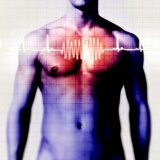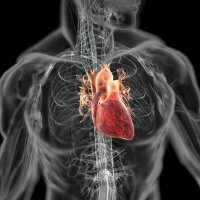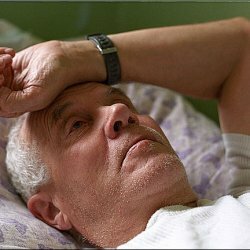First aid in arrhythmias

Heart rhythm problems occur when electrical impulses in the heart that coordinate the work of the human heart do not function properly, causing it to beat too fast, too slowly, or irregularly.
Some symptoms of cardiac arrhythmia include: weakness, fatigue, palpitations, low blood pressure, dizziness, fainting, and others.
First aid
The attack of cardiac arrhythmia quite often proceeds independently and characteristic is that it can as suddenly stop as it begins. If an attack of arrhythmia occurred for the first time, you should call an ambulance. Before the doctor comes, first, you need to calm the patient, help him overcome the feeling of fear and try to break the rhythm disturbance in simple ways. People around the sick should not panic, and their behavior should not be bustling. The patient creates conditions of rest in a position convenient for him - lying or sitting. Suspend a violation of the rhythm of the heart can make a change of position from the vertical to the horizontal. The invocation of a vomiting reflex by stimulation of the larynx with fingers is also applicable for arrhythmias. Other methods can only be performed by a doctor. Medical workers use special medications to stop the attack and recommend to the patient the medications that they need to have in case of repetition of heart rhythm disorder
First aid in arrhythmias at home is that the patient should be conveniently placed in a chair or put on a bed, Putting a high pillow under his back. Be sure to open the window for fresh air.
Help with arrhythmias: the patient must be protected from physical exertion and provide emotional rest. At the first signs of rhythm disturbance, apply various soothing agents. This tincture of valerian, motherwort, Valocordinum( 40-50 drops), Corvalolum, Elenium and others.
The patient himself should perform breathing exercises, taking a deep breath, holding his breath, and also close his eyes and gently press his fingers on his eyelids 3 times for 10 seconds for one minute.
In ventricular arrhythmias, the patient suddenly loses consciousness, his pulse falls. First aid in such cases is that you must first open the airway, tilt your head back, unbutton the collar and observe the restoration of the heart rate. If there is no improvement, it is necessary to perform external cardiac massage, artificial respiration, cardiac massage, breathing from mouth to mouth in a ratio of 15: 2, the number of cardiac contractions to 100 beats / minute or so. And watch for the restoration of heart rate. Then you need to call an emergency ambulance to continue to provide qualified medical care.
One type of arrhythmia is atrial fibrillation. First aid for atrial fibrillation is of limited nature. During an attack of the patient it is necessary to calm and give soothing drugs. In the case of dyspnea or the presence of swelling, the patient must be in a semi-sitting position. If the arrhythmia does not stop, call a doctor.
If you have heart rhythm disturbances, you should immediately call an ambulance. However, if the patient does not have breathing and palpitations, cardiopulmonary resuscitation should be used. To do this, the patient should be placed on a firm horizontal surface and placed next to him on the left, throw back his head and do artificial respiration. Resuscitative measures apply before the arrival of an ambulance.
Cardiac arrhythmia is diagnosed by a physician based on patient complaints, electrocardiogram( ECG) results and laboratory tests.



